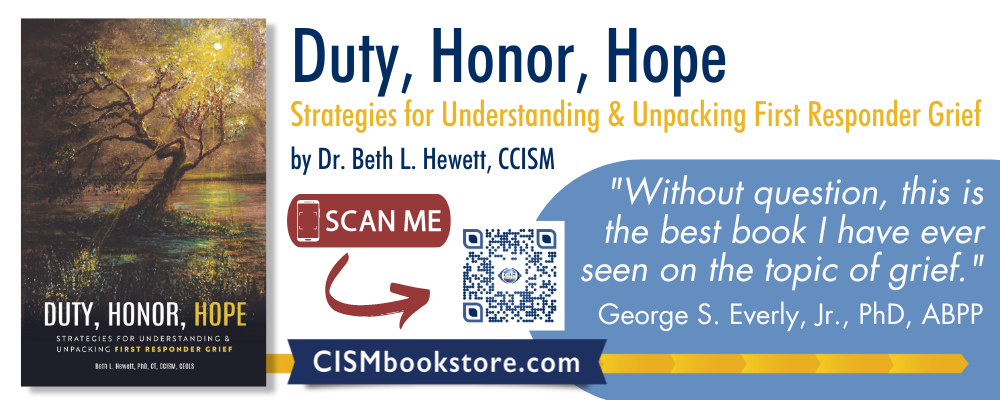CISM News
Survivor Informed Peer Support (SIPS): Two Decades of Peers Rising as “VolunPEERS”
By: Cherie Castellano L.P.C.
Research Fellow Duke University
Abstract: A model entitled “Survivor Informed Peer Support ” (SIPS) is introduced in this article to describe the peer support activity created for a new initiative delivered at VolunPEER, a nonprofit organization to give and grow peer support. More than 20 years of peer support experience has informed this writer in an attempt to integrate the “lessons learned” to establish the “Survivor Informed Peer Support” model as a unique and effective approach to peer support services needed in these trying times of trauma and crises. Expanded and refocused, the “Survivor Informed Peer Support” model is designed to be delivered in person in 1:1 or group settings however this model stands apart from this writers original approach in “Reciprocal Peer Support” discussed in this article [International Journal of Emergency Mental Health, 2012, 14(2)]as the focus is survivorship and is trauma informed in this new approach.
Cherie Castellano, LPC AAETS, is President & Founder of VolunPEER Inc. Cherie has developed twenty-three unique peer support programs, some recognized as national models utilizing her expertise in peer support, crisis intervention and behavioral Healthcare innovations.
The tragic events on 9/11/2001 prompted the creation of a variety of culturally competent peer support telephonic services for rescuers and those most impacted by the disaster.as a way to address unmet behavioral healthcare challenges offered through UMDNJ- University Behavioral HealthCare. For more than two decades peer services were offered with a structured approach created by this writer known as “Reciprocal Peer Support.” After refining telephonic peer services for two decades, it seemed sufficient until I had a personal traumatic experience that informed my work.
My “Survivor” Story
After more than twenty years of leadership in peer support program development and service provision, my “norm” was to respond to others in need, as I would say “rescuing rescuers” using peer connections. On March 9, 2022, my family was devastated by a house fire that destroyed both our home and everything we owned; however our survival left us grateful for our lives despite the tragedy and trauma we endured. We moved into a hotel, bought clothes at a local convenience store and began our journey as a homeless family with three dogs, two young adult children and my husband and myself determined to be resilient.
To our surprise and awe, it seemed everyone we had ever supported or “rescued” in our lives wanted to give back to us now that we were in need. Almost every hour of the days that followed we were inundated with people volunteering to help, dropping off food, clothes, literally any item from a coat to a computer, we had assistance from the kindness of our community of volunteers! A “GoFundMe” was established and along with over seven hundred people donating to the rebuild of our home and our lives they included messages of hope and thanks that were invaluable glimpses of kindness that we would read out loud to each other often with tears of gratitude.
What became clear within that first month of our crisis was that our ability to survive was intimately connected to our faith, family, and community of volunteers who sustained our lives. The concept of volunteers and peer support seemed connected both personally and professionally as I began to consider a new application for peer support following traumatic events for my own mental health. Although I consider myself part of the law enforcement culture as my husband is a Captain in the Morris County Prosecutor’s Office, and as a mother of a child who had early childhood challenges, I am connected to special Moms, but this fire and traumatic event seemed to define my need for connection more than any other cultural consideration.
My survival seemed contingent on my connection to my peers, volunteers, and those who had a shared lived traumatic experience related to our fire. “Survivor Informed Peer Support” (SIPS) was conceptualized by my trauma but the launched for of a community driven peer support program offered through “VolunPEER Inc” a nonprofit organization with a mission to allow individuals to get, give or grow peer support.
The Survivor Informed Peer Support (SIPS) model
VolunPEER’s “Survivor Informed Peer Support/SIPS” model has four tasks; Task 1: Reflection & Connection, Task 2: Collect Information, Risk Assessment, & Trauma Resource mgt, Task 3: Wellness & Resilience Building & Mind/Body connection, Task 4: VolunPEER “Hand off”/ for sustainability w/Community support.
Task One – Reflection & Connection
Reflection is the first step in SIPS task one as an essential component for peer support success. Experiencing traumatic events and how we survive and thrive in the aftermath requires storytelling that is thoughtful with insight as peer support begins with a reflection based on a shared lived traumatic experience. “Survivor Informed Peer Support ” requires a pure presence at the heart of the reflection and is necessary for successful peer support engagement. In SIPS, the peer supporter is trained and prepared to write their story of trauma and survival to determine the key points to share lived experience without triggering experiences or monopolizing the initial engagement. Reflection allows for a prepared approach to embrace one’s own survival story as a shared experience to connect to the client without judgment, avoiding preaching or directing, to cope with the moments of shared suffering and pain with a strength based approach.
Connection can be enhanced when reflection is the first strategy for SIPS task one. Connection is guided by feeling with the survivor being supported with SIPS and through implementing active listening and Theresa Wisemans techniques in empathic listening. “Matching” traumatic experiences for survivors to connect may often not be exact but will be guided by the SIPS categories of survivors in the SIPS model.
When an initial contact is of a crisis nature, soon after the event occurred, the intimacy created by the sense of vulnerability of all involved expedites the connection of both the peer in need and peer supporter and also increases the risk for triggers and challenges. Survivors of traumatic events who reach out for help if handled poorly may refuse the connection, perhaps forever.
SIPS peer supporters will be trained to recognize a resistant peer at the initial contact, as well as to recognize their own frustrations and need to help in the peer relationship. Strength based approaches that maintain a focus on serving others needs is a primary tool to connection. If a peer supporter fails to establish reflection and connection of a pure presence with the peer in need the outcome will often result in premature termination of the contact and in turn the helping relationship. In supervision, peer supporters are challenged to explore why the connection was not made and how their reflection may have been experienced. Part of the need for ongoing reflection and self-assessment is to ensure that the peer is aware of his or her vulnerabilities and strengths in the beginning of the connection process.
The SIPS model will match peers most effectively based upon shared traumatic experiences related to their survivorship category. Shared experiences related to trauma is the primary matching criteria with the cultural considerations being a secondary component as needed. It is essential, however, that the peer supporter’s experience is in the past, ideally survived, treated and resolved in terms of capacity to share without being triggered. If he or she struggles in relapse or life changes it is an important component of self-awareness to ensure reflection and connection are beneficial to both the peers and those offering support by encouraging SIPS peers to use self-care techniques.
Task Two -Collect Information, Risk Assessment and trauma resource management.
In task two the Survivor Informed Peer Support Model is guided by structure and tools. To collect certain data, one must be ready to collect information about the traumatic event as the survival theme as well as the holistic view of the person’s life before, during and after the traumatic event. SAMSHA’s model of peer support frames the exploration to collect information. SIPS peers will get basic demographic and general data by using scripts forms and in person data forms as needed. Tools offered in SIPS include but are not limited to CAGE questionnaires, crisis and suicide assessment infused into every initial session as needed.
Listening for emotion not “the story” is essential and the basics of trauma informed care to ensure safety and basic needs met are included. To ensure a safe environment, an office space or face to face connection must be discreetly integrated into the information gathering experience. The information gathering phase, similar to the reflection and connection phase, utilizes the same guidelines for engagement, respect and confidentiality. For SIPS intervention services a model like QPR or SAFER-R models of individual crisis intervention can be an augmentation as developed by Dr George Everly at the International Critical Incident Stress Foundation, Inc (ICISF).
A conversational collection of information is not an assessment unless a peer is reporting acute reactions which require a clinician. Reflection, connection and shared lived experiences create a significant opportunity for information sharing in a safe and supportive environment. Shared information and experience foster accurate information collection to ensure SIPS peers and those served are provided all services necessary to ensure safety.
Task Three – Wellness & Resilience building for mind/body connection.
Task three begins the resilience process to collaboratively explore the evidence-based model of wellness (Swarbrick) and or resilience (Seligman) as a structure to create planning together in the wake of a traumatic event. Survivors use their wellness techniques and inherent resilience but in this phase the peer role aligns with those being served to confirm needs and goals to encourage wellness and build resilience. Prompts and tools offer the SIPS peer a format to engage in this phase of the peer relationship. Today’s web-based referral options and access to information are so prevalent as a primary tool for any mental health challenge a survivor can customize their plans. The collaboration between survivors fosters a partnership that encourages healing for all involved. An essential key element in this phase is to use SMART goal strategies with fluid options to adapt in the process of rising from the traumatic event and the vicissitudes in the aftermath of life forever changed.
All wellness and resilient resources and plans offered can impact the credibility of the peer supporter if plans and services offered fail. A peer in need as a survivor will rationalize that the peer supporter is genuine if services offered go well or is a phony and not truly interested in helping if the resources/referrals go badly. SIPS peers may base this task on their own accounts of their experience. SIPS allows peers to model the importance of recognizing resilience. Reinforcement of insights is found in the self-care activities offered to the SIPS peers to fuel their work with other survivors in need. SIPS peers are encouraged to work within a three-session model and handoff as needed to clinicians; however it can be an open-ended process based on the client’s needs.
Self-Care is emphasized with opportunities for assistance encouraged within the peer support team and managed through resilience building activity and advocacy.
Task Four is the VolunPEER “Hand off”/ for sustainability with Community support. In this phase the SIPS peer begins to consider the “handoff” to community and trauma informed resources to ensure the SIPS interactions are time limited and structured to manage expectations and foster healthy relationships. The SIPS Four survivor groups can be offered a minimum of one time per month as a psychoeducational group based on survivor experiences. Trauma and connection may create a feeling of guilt or shame for both the SIPS peer and client if the three-session goal is not clearly articulated at the start of the process.
In addition, an ideal handoff may include the SIPS peer to a group rather than a total disconnect. SIPS strategies may include a monthly email or connection during anniversary dates of the traumatic event. In order to ensure a rewarding experience, the ability for a client to re- enter a SIPS episode of care beyond the initial three sessions. It is essential based on limited resources for the handoff that the capacity to offer additional SIPS peer services may be varied. Praise bombardment activities, social service supports and groups to create a community transition for both the SIPS peer and client is essential for both to move forward.
Defining VolunPEER
Why VolunPEER? The current limits of existing behavioral healthcare services require another option for peer support to fill the gaps or offer hope while waiting for professional clinicians to begin treatment. Post Covid isolation and change have left many of us disconnected with limited contact and community experiences. With resources LIMITED for mental health support, current systems and materials for collaboration are often not culturally competent and peer support is poorly defined & often not a standardized integrated service in behavioral healthcare service delivery systems. A crisis, like our fire, may offer an opportunity which then is often lost when the smoke clears and our sustainable lives resume.
VolunPEER Inc.’s mission is to give and grow access to “Survivor Informed Peer Support” that is simple, structured, & collaborative with training to combat “peers gone wild. “The VolunPEER Mission is to GET, GIVE, & GROW peer support to those in need. “Survivor’s Shared Lived Experiences” offers connection & healing with a foundation of trauma informed training, support, & resources for VolunPEER services. VolunPEER Inc will partner with non- profit organizations to GROW their current peer support to expand and enhance peer support services. VolunPEER Survivor Informed Peer Support model (SIPS) emphasizes the survivor connections are the most profound. Surviving Traumatic events offer connection as a peer that emphasizes strengths & the need for self-care. Survivor experiences are embedded in social service crisis continuums and can ensure confidentiality to combat stigma, inform resources and mandates structured training for peer support interactions with a trauma recovery focus.
Survivor Informed Peer Support is a Trauma Informed Model
There are four Survivor Groups targeted for the SIPS Peer intervention which include;
Survivors of Disasters- Fire/Flood/Violence/Homelessness/9/11 Man made/natural disasters, Survivor First Responders- Police, Fire Ems, Military, Healthcare workers exposed to a traumatic event, Survivors of Trauma- Medical Illness, Traumatic Events- Abuse-Physical/Sexual, Traumatic Injury, Loss, Survivor Specialty groups- Parents of special needs child/adult Clergy, LGBTQ, College Students, underserved populations with traumatic events.
VolunPEER services include.
GET VOLUNPEER SUPPORT- Access-Request to GET VolunPEER support through our automated system online via the website or call to request VolunPEER support. Offerings include 1:1 VolunPEER support in person, three session model, VolunPEER Survivor Support groups in person (open ended groups), and Virtual VolunPEER sessions/1:1 & Group when indicated.
GIVE VOLUNPEER SUPPORT- VolunPEER Training Overview Sessions will begin the process. Following the overview session an additional four skill building sessions will offer support and competency. Clinician resources and support by licensed clinicians will be accessible through a VolunPEER Resource directory.
GROW VOLUNPEER SUPPORT-Request a VolunPEER Peer support Consultation for a needs assessment and to grow your organizations peer support efforts.
Summary
In Survivor Informed Peer Support trauma and survivorship is the focus for effective peer connection which must be reframed in a trauma informed lens. In 2014 the Substance Abuse and Mental Health Services Administration (SAMSHA) established six guiding principles for trauma informed care.
The six guiding principles are:
1.) Safety
2.) Trustworthiness and transparency
3.) Peer Support
4.) Collaboration and mutuality
5.) Empowerment, voice and choice
6.) Cultural, historical and gender issues.
The guiding principles stress the need for organizations inside and outside of mental health to ensure the safety of clients and staff, promote transparency in decision making and encourage the sharing of lived experiences between clients and staff. A call to foster collaborative relationships and validate the strength of clients aligns with peer support concepts. (Rhodes, l., Counseling today October 2023 Vol 66 No. 4, pg 25-28) In my peer support and crisis intervention work over the last twenty-five years the evolution of peer support has been impacted by the recognition and growing interest and national standardization of the field as SAMSHA defined in the National Certification standards June 2023. In addition, the varied application of peers embedded into multidisciplinary teams offering behavioral healthcare systems is an indication of the recognition and value of peer support as an effective intervention to foster healing. An enhancement to treatment when indicated rather than a replacement is the emphasis in SIPS. Traumatized people can trigger each other but they also can share the “Glimmers’ ‘ The term glimmer, however, was introduced in 2018 in the book The Polyvagal Theory in Therapy: Engaging the Rhythm of Regulation2 by licensed clinical social worker Deb Dana. Glimmers reflect times in which we reflect on the light in the darkness of surviving a traumatic event and it is an experience to cherish rather than forget. Much like the Japanese art of pottery kintsugi, the broken pottery pieces are filled with gold to fill in the cracks to be forever changed but more beautiful with the recognition of the brokenness and new gold-filled structure that is potentially offered stronger. SIPS interventions highlight that post traumatic stress is inevitable and temporary but more important is the emphasis on post traumatic growth.
A focus on Posttraumatic growth describes three categories which include Sense of Self, Relationships, Spirituality/religious beliefs. Individuals do not simply survive without negative effects; they experience themselves as better than they were before the traumatic event. (Calhoun and Terdeshi ,2000) Trauma allows an opportunity to grow as a person. If trauma may allow an opportunity to grow then Survivor informed peer support may allow an opportunity to grow together rising towards the light out of darkness.
Questions regarding this article should be directed to [email protected].
Developing Better Stronger Healthier
Beyond Just Wishful Thinking or Another New Program!
By: John R. Robertson.
ICISF Approved Instructor and Member
Have you ever noticed how many times, programs and training frequently end with the ‘now what?” question? Basically, we get training in this area and then are informed that there is more training we should get in that area of the 1st training.
When it comes to Developing Better Stronger Healthier, Beyond Just Wishful Thinking or another new Program, you know that it requires leadership support and buy-in. The bottom line is there needs to be some ROI or at least a process to implement which can be seen, tracked, and measured. Obviously, lots of us love to do events, conferences, or perhaps it is being the one speaking, or training. Either way, the key question is always, “what about the change? What about the difference?”
Basically, if it was selling autos, we would say it feels like we are constantly being upsold!
In a tragic irony, the process is actually quite normal, in fact to use part of the expression ‘it is normal people doing normal things in an abnormal educational context’
There are 3 things that I consistently notice with this programmatic approach to building peer support and wellness in the workplace.
- The event is never the real crisis
- How leadership handles the change/crisis/storm tilts the workplace and workforce towards healthy or unhealthy. It will never leave it neutral.
- Lastly, the wrong person doing an intervention, providing support, can frequently be worse than the event? Whether he or she is an internal peer or external MH person is secondary as the ripple from this wrong person will challenge ‘getting back to a new norm’ in ways that most leadership and peers had not thought of.
Bottom line there is no psychological health and safety, peer support, resilience [never mind thriving] if there is no social safety. This can happen with the trainer doing the training as well– they get the content but do not ‘get it’!
I was called into a situation where this very thing happened. The difference was that there were two people, one as the EAP MH and the other as the team member. It was a first responder culture, so they already had their own ethos when it came to being “FINE” or “GOOD”.
The brief overview of this tragic situation was a young emergency personnel had ended his shift and got to the parking lot and dropped. While their colleagues worked on the person, there was nothing that worked. The short version was this 30 something-year-old had an aneurysm and died. He had a two-month-old baby at home. Added to that, one of their colleagues had been killed in a home mechanics shop tragedy 2 days earlier.
I received a phone call from the EAP to ask if I would be willing to go on site and address some of the fall-out. It was rippling into other areas, including the support staff, and things had escalated.
I arrived on scene, was escorted into the area where the first responders work. I was greeted at the door by the most senior rank officer and greeted with the words, [corrected for G-rating] “what the heck do you think you are doing here? We do not need anyone else from the stupid EAP or internal experts.”
I call it the hot water-tea bag principle as values always leak out in hot water [like a tea bag]. Tragically leadership and organizations spend thousands on training, courses, and other great things however what will leak out in hot water is not getting resolved. If there is a desire to grow a workplace where people want to work, and the kind peer support leadership people trust and respect then it is an inside out approach to allow it to thrive.
To be better, stronger, healthier!
4 assets must be in play, with their respective facets requires a rethink of the traditional reactive, whack-a-mole approach of supporting persons into a developmental, or intentional, approach.
- First Asset is a strong core. This asset has five facets. First, leadership must have the physical health to be able to follow it through. Leadership must have the emotional well being to be able to address these concerns. The third facet is trust, trust for one another, trust for the leadership, trust for the organization, trust for the plan. Another facet is ensuring that the right people are in the right places and for the right reasons. And the final facet is a true ownership and buy-in to the values
- Second Asset is aligned motivation. This is the foundation to ensure that the plan works, not a series of checklists of to-dos, it has four facets. The first facet is the motivation – it must be pure, not about compliance, but about health, and well-being. It must be values-anchored, so it is about alignment, engagement, and respect. The next facet is the leadership must have a trust building communication style. The style that allows leaders to deal with difficult people to deal with conflict to invite, engage, and ensure compliance when it is needed. Another facet is collective accountability. This means expressions like not my job, I’m too busy, are not heard
- Third Asset is a targeted strategy. This is the fertile soil where growth happens. If this targeted strategy is not established, the new norm seldom results in being positive or healthy. The facets include a leadership who understands that normal people have normal reactions to abnormal situations. Leadership must understand that this is a reaction to a crisis or change and not a performance issue. Second facet is that leadership must provide tactical support. Another facet is leadership must work with other leadership and the team afterwards to address, heal, or follow through on some of the gaps that happened. And the final facet is leadership must model well-being. They must be willing to normalize their reactions to abnormal events. If these facets are not in place the 4th Asset will not happen
- The final Asset is defining a refinable new norm. One of the realities is beliefs, values, and a variety of other elements have been impacted through crisis/change. People may question their roles, people may be questioning the leadership, or what the real values are of the organization. People may be looking at leaving, new personnel required, or maybe some of the roles need to change for the organization to grow forward. The four facets involved in DRNN is first the new norm needs to be defined. This means leadership needs to meet to define and clarify what the new norm looks like; meet with others to clarify some of the things that have changed, what needs to be clarified to move forward in health. The second facet is there needs to be a launch plan. People need to be reminded that this plan is refinable but there has to be a sense of a plan. The third facet is the new plan must be faith focused, not fear focused. It has to have a positive orientation in its ethos around what leadership and the organization stands for. The final facet is leadership needs to be able to rally buy-in
Transforming the traditional crisis response, beyond just a CISM intervention, an EAP call, with some organizational personnel, so your organization, leadership and personnel thrive afterwards.
However, let me be crystal clear – this is not another layer of responsibilities, or even more “to do’s” on a leader’s already overcrowded plate.
I know that leadership holds the reins for many things, in fact they can result in steering a workplace completely off the trail and into a ditch. I am not pretending that this does not happen. However, look at the ever-increasing demands that are being added to leaders’ plates when it comes to the wellbeing of people.
Ask almost any leader ‘did you get into leadership to focus on these concerns for the wellbeing and workforce wellness, pressures for culture, recruitment/retention, and the obvious productivity?”
Workplace wellness is not a 1 size fits all, but it requires these 4 assets [and their facets] to come though crisis/change and thrive. it can never be a program, or training, that one does and it all works.
It requires a consistent effort in a steady direction to be
Better Stronger Healthier – Beyond Just Wishful Thinking or another new Program!
It requires the willingness to Run Toward the Roar to thrive!
Visit our website: Fortlog.co
Self-Care is Community Care: The Vital Role of Resilience in Critical Incident Stress Management Teams
By: Nicole E. Ferry, MPA
In the world of public safety, the men and women who dedicate their lives to protect and serve our communities often face unimaginable challenges. They stand on the front lines, confronting the darkest aspects of humanity while striving to maintain order and safety. The toll of such a demanding profession can be immense, making resilience a crucial aspect of their journey. In this article, we will explore the profound connection between self-care and community care, emphasizing the importance of resilience for those involved in Critical Incident Stress Management (CISM).
The Backbone of Our Communities
Law enforcement officers, firefighters, paramedics, and other first responders are the backbone of our communities. They rush towards danger when others flee, offering solace and support when chaos strikes. Their commitment to public safety often means encountering traumatic events, witnessing human suffering, and making split-second, life-altering decisions.
This continuous exposure to critical incidents can take a heavy toll on their mental and emotional well-being. As a society, we owe it to these brave individuals to not only recognize their sacrifices but also provide them with the tools and support they need to thrive in their roles.
The Heart of Resilience
At the heart of resilience lies the understanding that self-care is not a selfish act but rather a fundamental building block of community care. Resilience is not the absence of stress or trauma; it is the ability to bounce back from adversity and grow stronger through experience. For those involved in Critical Incident Stress Management, cultivating resilience is both a personal and professional imperative.
Resilience starts with self-awareness. It means acknowledging the emotional toll that the job can take and recognizing the importance of addressing it. In the world of CISM, where professionals are dedicated to helping others cope with trauma, self-care often takes a backseat. However, it is crucial to remember that one cannot pour from an empty cup.
The Ripple Effect of Self-Care
The ripple effect of self-care within the world of CISM is profound. When those who provide support and care for others prioritize their own well-being, they become better equipped to serve their communities effectively. Resilience is not only about weathering the storm but also about guiding others through it. By taking care of themselves, CISM professionals set a powerful example for their colleagues and the community at large.
When CISM Team members prioritize their mental, emotional, and physical health, they become more empathetic listeners, better communicators, and more effective counselors. This, in turn, enhances the quality of support they can provide to first responders and those affected by critical incidents. In essence, self-care becomes a cornerstone of community care.
Strategies for Building Resilience
Building resilience is a journey that requires dedication and a multifaceted approach. Here are some strategies that CISM Teams and first responders can incorporate into their lives:
Mindfulness and Meditation: These practices can help individuals manage stress, increase self-awareness, and improve their emotional well-being.
Physical Health: Regular exercise, a balanced diet, and sufficient sleep are essential for maintaining physical health, which is closely linked to mental well-being.
Peer Support: CISM has peer support as its bedrock. Teams need to connect with colleagues who understand the unique challenges of the profession. Sharing experiences and seeking support from peers can be immensely beneficial.
Professional Help: There should be no stigma attached to seeking professional help when needed. Therapists, counselors, and mental health professionals can provide valuable guidance and support.
Work-Life Balance: Strive to maintain a healthy work-life balance to prevent burnout. Taking time to engage in hobbies and spend quality time with loved ones is essential.
Training and Education: Continuously update your knowledge and skills in the field of CISM. Staying informed about the latest techniques and best practices can enhance your ability to provide effective support.
The Healing Power of Connection
In the world of Critical Incident Stress Management, where the pain and suffering of others often become the focal point, it can be easy to lose sight of one’s own needs. However, it is crucial to remember that self-care is not a solitary endeavor. It is a journey that is deeply interconnected with the well-being of the entire community.
When CISM Team members prioritize their own resilience and well-being, they not only become better equipped to provide support but also inspire those they serve to do the same. The healing power of connection extends beyond the immediate aftermath of a critical incident; it reverberates through the community, fostering a culture of care and compassion.
Conclusion
In the world of public safety, Critical Incident Stress Management professionals play a vital role in helping individuals and communities cope with trauma and adversity. However, their effectiveness in this role is closely tied to their own resilience and well-being. Self-care is not a selfish act but rather an essential component of community care.
By recognizing the profound connection between self-care and community care, those involved in CISM teams can build resilience that not only sustains them through the challenges they face but also empowers them to better serve their communities. Resilience is not about bouncing back; it’s about bouncing forward, stronger, and more prepared to make a positive impact on the world. In the world of CISM, self-care is not an option; it’s a responsibility—an essential act of love for oneself and one’s community.
Biography
Nicole E. Ferry, MPA, ICISF member, is a seasoned public safety leader with 26 years in law enforcement, specializing in areas like mental health, suicide prevention, and human trafficking. As a Special Agent in Charge (Ret.), she has been dedicated to promoting well-being and resilience within the field. Nicole is a graduate of the FBI National Academy and holds a Master’s in Public Administration with a focus on Homeland Security. She’s also a certified yoga instructor and RISE Evidenced Based Stress Reduction Facilitator. Based in Massachusetts, she enjoys outdoor activities and travels with her family.
Taking Our Own Self-Care Advice Is Hard
The Poster Child
By: Fuzzy Lake, MDiv, CPC, CGW, CCISN, CRTS
I began my volunteer career in the early 1990’s as a volunteer chaplain at our local hospital in the hometown where I lived in South-Central Indiana. Shortly thereafter, I added a volunteer chaplain position to our local Indiana State Police Post to that resume, and then off and on, some of the other emergency services in our county. I ran a small business with 12 employees and pastored a church while I did that.
I went into ministry later in life, after a tumultuous childhood and 10-year stint trying to be a functioning alcoholic, I met a Higher Power, whom I choose to call God, and got sober in 1984. I struggled for several years until I met my sponsor, and he helped me learn all the things about being a husband, man, and father that I was never taught. With that coming together, I felt the call to deepen that relationship with my Higher Power and go into Ministry.
As is the case with most recovering and non-recovering alcoholics, we are all in. This ministry for me was no different. I was all in. After a while, I became the community “go to guy” to call when you had a crisis. Even before I knew what crisis intervention was.
I flew to Maryland in 1991 to take my first course in CISM. It was a group class. After the class, I landed in Indianapolis, Indiana, where I checked my messages on my phone. I found I had a message from the Indiana State Police Post Command, asking if I knew anything about CISM. There was a volunteer fire dept. asking for a CISD and wanted it done right away. I found someone to help and did a CISD the next day.
Later that year I took the Assisting Individuals in Crisis class. This is the one that would change my life as a pastor and chaplain forever. Before I would spend hours with couples and individuals doing pastoral counseling with them. Once I found out that most of them just needed crisis intervention, I began to do things differently. By doing crisis intervention rather than either chaplain or pastoral care, I could see more people in less time.
Yes, that is what I said. More people in less time. And that is what I did. Remember I said ‘all-in”.
With the help of a friend, we started our county CISM team, which now covers 5 counties in Indiana and has 53 members, including a specially trained CISM Dog.
Fast forward 23 years. I was called to the local hospital for a fetal demise. We still called them stillborn’ s at the time. I spent a couple hours with family. Mom was in ICU because of complications in the delivery. She could not see the baby. Just the rest of the family. I walked with the nurse to the basement morgue and delivered the baby to the cooler. The next morning the same nurse called me and asked me if I would come back to the hospital and help her take the baby out of the cooler and let his mom see him in ICU. She was awake and alert. I had reservations; however, the baby was still there, and he looked the same as he did the night before. After wrapping him in a warm Afghan, we took him upstairs for his mom to see him. She held him for about an hour and then we took him back to the morgue.
When I walked out of the hospital that day, I was done with ministry. I had reached the bottom of the candle, and I was so gone that I could not even find my truck that was parked in the usual chaplain’s parking place. I had to have someone help me find it.
I got back to my office and called my wife. I knew I needed help. I also knew that I had PTSD from childhood. I looked up some people who did EMDR and found a therapist that did that in our area.
I met with him twice so that he could get information. And then he said something that I want to share with all my friends who are just like me. Those people who are “All-In”. He said, “Fuzzy, I believe you have some PTSD from childhood. But it is nothing compared to the trauma you have suffered in your ministry.”
Nothing compared to the trauma I had suffered in my ministry!! Wow. Those were hard words to hear. I keep great records. He asked me if I could list all the celebrations of life’s that I had done for children and people who had completed suicide. There were 18 suicides and 49 children under the age of 18. That did not count for he 100’s of others that I did in the then 23 years of ministry.
That’s when I changed the way I did things. To keep my sobriety and my sanity, I had to not only learn how to say “No”, but I also had to learn how to say “Hell No”. For those people who would not take no for an answer.
Then I also learned how to do “me” time. Even though I knew what to do, I rarely practiced it. I taught it and did not do it. While I still sometimes am tempted to be all things to all people, I know that I cannot, and I will not.
All of this to say I know there are lots of people reading this that have been there or are there now. I hope you take this as a wake-up call. Don’t get to the place I was at. It was a very dark place. If ever there was a time when I was close to drinking again, it was there.
Remember, rarely, if ever, can you un-see, un-hear, or un-smell a trauma. And when you hear someone else’s trauma, you take that on also.
FOR IMMEDIATE RELEASE
February 15, 2024
Media Contact:
Jenna Johnson | 843-371-8216 | [email protected]
CSU’s Dewey Center for Chaplaincy partners with ICISF
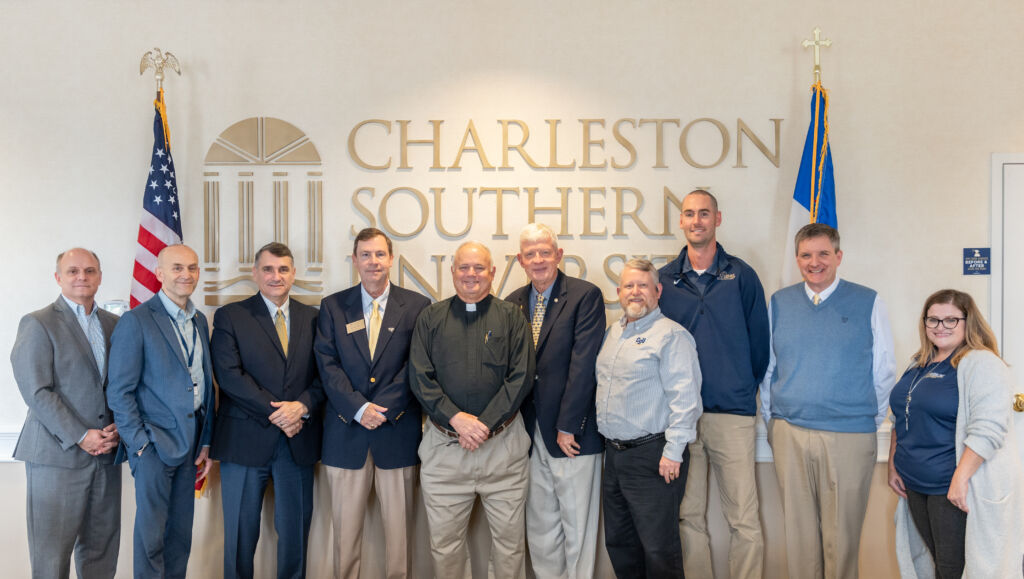
Group photo: (L-R) Dr. Michael Wilder, CSU provost and vice president for academic affairs; Dr. David Baggs, CSU vice president for development; Keith Faulkner, CSU president; Luke Blackmon, vice president for business affairs; Rev. Rob Dewey; Dr. Ron Harvell, director of the Dewey Center for Chaplaincy; Dr. Ben Phillips, dean of the College of Christian Studies; Thomas Nicholson, leader of the Fellowship of Christian Athletes at CSU; Dr. Michael Bryant, vice president for strategic planning, faith integration, and Christian leadership; and Sundi Romano, office manager for the Dewey Center.
CHARLESTON, SC – The Dewey Center for Chaplaincy at Charleston Southern University recently entered into a strategic partnership with the International Critical Incident Stress Foundation, Inc., of Ellicott City, Maryland.
Dr. Ron Harvell, director of the Dewey Center, said, “Together, we will provide accessible training for those serving, or preparing to serve, in environments where crisis intervention skills are deeply needed, to promote one another’s missions, and disseminate information.”
The Dewey Center for Chaplaincy’s mission is to increase chaplaincy ministry skills using education and training to provide the world with more confident, courageous, and compassionate servant leaders. Through CSU’s College of Christian Studies, CSU provides the only accredited Bachelor of Arts degree in chaplaincy ministry in the United States. Students may major or minor in chaplaincy ministry or take classes as electives. These courses include Introduction to Crisis Ministry, Foundations in Chaplaincy Ministry, Christian Counseling, and Internships.
The Center’s training programs have awarded training certificates to over 800 students in the past four years. Current training programs include Mental Health First Aid, Suicide Prevention, Human Flourishing, Pastoral Care Intervention, and PTSD training for Global Leaders.
The Center was launched in 2020 after Rev. Rob Dewey and his wife, Kathy, committed $2 million to establish the Center through annual gifts and listing CSU as a beneficiary of their estate. Dewey said this strategic partnership is monumental, considering the fact that ICISF trains upwards of 40,000 first responders, nurses, and pastors each year. He added, “I came in contact with the International Critical Incident Stress Foundation, Inc. in 1996 as a consumer. I went to one of their in-person conferences and said, ‘Man, this is what I have been trying to do on the streets of Charleston, North Charleston, Goose Creek, but I didn’t have a formula to go with it.’”
Richard Barton, ICISF Chief Executive Officer, said, “Our strategic partnership with the Dewey Center for Chaplaincy is a wonderful addition. I believe that we will be able to carry out some very meaningful work to support each other. We look forward to working with their organization in the future.” In addition to cross promotional opportunities, the two organizations will explore curriculum and course content development as well as looking into the ICISF-approved Instructor Candidate Program.
The first event in collaboration with the Dewey Center and ICISF partnership will be the Spiritual Care in Crises Conference at Charleston Southern University April 2-6. Some of the lead trainers include:
- George Everly: ICISF; Johns Hopkins – disaster mental health, resilience, crisis intervention, terrorism, psychological first aid
- Victor Welzant: ICISF; Crisis Intervention, Critical Incident Stress Management, Suicide, Disaster Behavioral Health and the impact and treatment of trauma
- Tyler Vanderweele: Harvard; integrating empirical social sciences and humanities on topics central to human flourishing such as purpose, virtue, marriage and family, religion, work, etc.
- Rev Rob Dewey: Director of Low Country Chaplaincy, Co-author of Pastoral Care Intervention courses; Critical Incidents in Places of Worship- Providing Effective Crisis Support
Courses offered:
- Assisting Individuals in Crisis and Group Crisis Intervention
- Emotional and Spiritual Care in Disasters
- Global PTSD Training for Ministry Leaders
- Human Spirit and Faith Tactics in CISM
- Pastoral Crisis Intervention
- Pastoral Crisis Intervention Approved Instructor Candidate Program
- Spiritual and Psychological First Aid
To register for this upcoming conference, click here.
The ICISF offers these and a variety of education and training programs, both in person and virtually. Primary courses for someone new to Critical Incident Stress Management (CISM) are their Core Courses (Assisting Individuals in Crisis & Group Crisis Intervention) which provide the foundation for crisis intervention. From there, individuals can participate in Advanced Core Courses to further their crisis intervention skills; profession specific courses, such as CISM in the College and University Setting, Grief Following Trauma and Spiritual and Psychological First Aid; CISM Refreshers, which offer practice scenarios; and Learning with Leaders, which are short presentations where subject matter experts share their expertise.
In addition to providing training opportunities, ICISF also provides CISM certification, CISM support and many more resources, such as the Crisis Journal, Crisis Resource Library, CISM Bookstore, CISM Live Series, CISM News (monthly blog), and the ICISF Podcast Series. Learn more about ICISF’s strategic partnerships, offerings, and resources at ICISF.org.
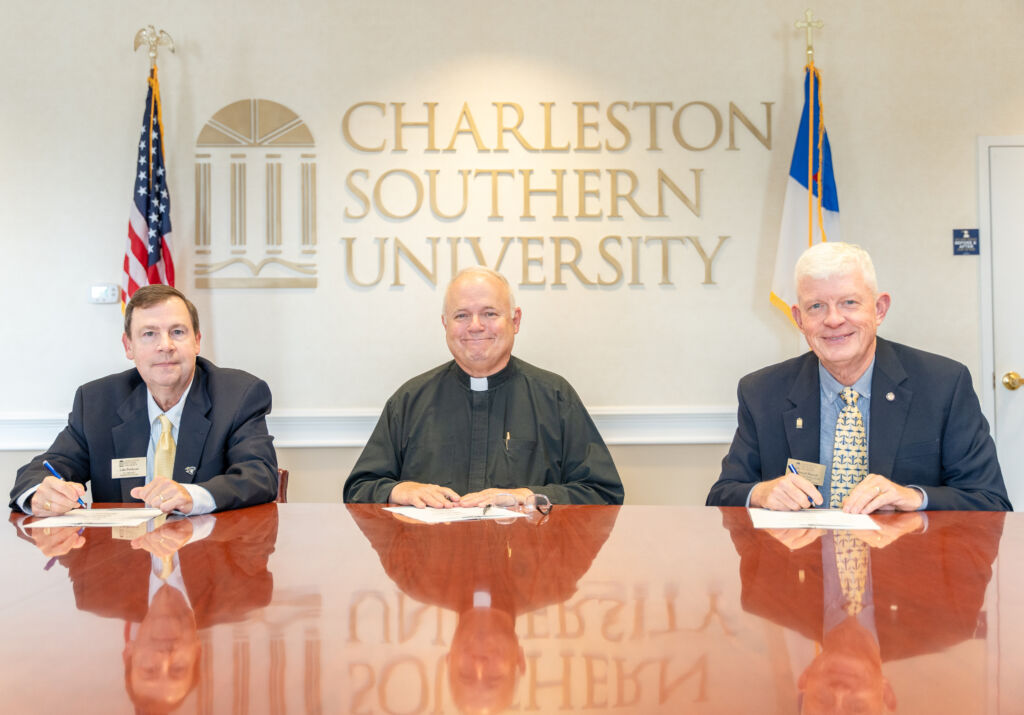
Photo: Luke Blackmon, CSU vice president for business affairs, the Rev. Rob Dewey, and Dr. Ron Harvell sign the agreement with ICISF.
###
About Charleston Southern University: Founded in 1964 in the heart of the Charleston metro area, Charleston Southern University is a private, Christian liberal arts university. With an enrollment of more than 3,500 students, CSU offers more than 80 academically rigorous and faith-integrated undergraduate, graduate, and doctoral programs. Charleston Southern has been recognized by U.S. News & World Report nationally for Best Online Bachelor’s Programs and – Best Online Bachelor’s Programs for Veterans. Students can learn online or in a traditional classroom setting, all while discovering their pathway to purpose.
About ICISF: The mission of the ICISF is to be the leader in providing education, training, consultation, and support services in comprehensive crisis intervention and disaster behavioral health services to emergency responders, and other professions, organizations and communities worldwide.
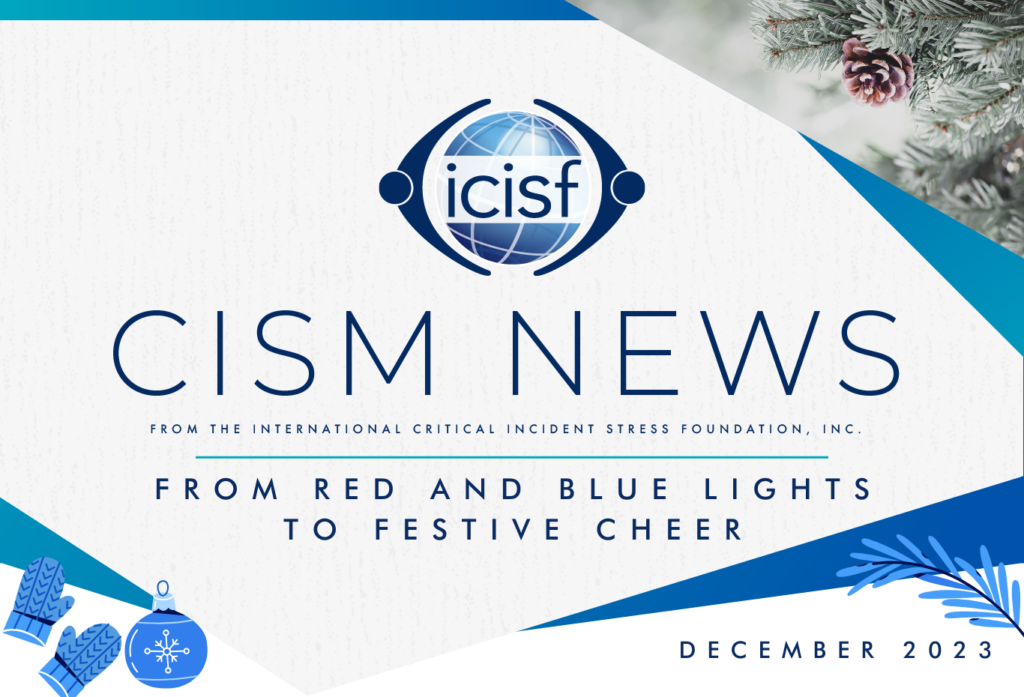

How To Help Troubled Service Members & Veterans Get Through The Holidays
By: Tom Temin
Tis the season to be jolly. But military service members and veterans often experience a spike in depression or post traumatic stress disorder — even suicide — this time of year.
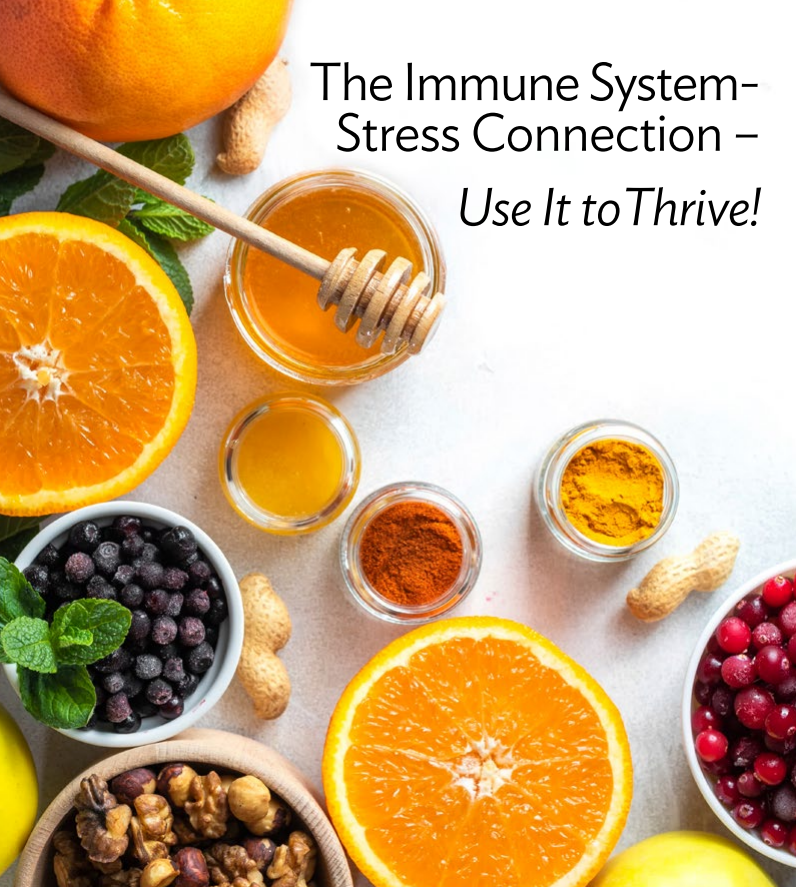
The Immune System-Stress Connection: Use It To Thrive
By: Cynthia Ackrill, MD, PCC, FAIS
Like our immune system, our stress reaction system is also there to protect us from the dangers of the world. 24/7 the brain stays on high alert, scoping out any possible threats from escaped tigers to cars cutting us off to sneers on our partner’s face.

“Take a moment to reflect and look back – but only a moment because new possibilities are just over the horizon. With the end of a year, it’s time to think of the new possibilities in the future.”
Start the new year with CISM Training! The new year is filled with a variety of core, advanced and specialty courses to aid you in gaining valuable knowledge in crisis intervention.
January 15-16, 2024: Managing School Crises: From Theory to Application
January 17, 2024: Resilient Leadership for Emergency Services & Healthcare Professions
January 19, 2024: De-escalation Skills for the Front Line: A Practical Approach
January 24-26, 2024: Assisting Individuals in Crisis and Group Crisis Intervention
January 26, 2024: Suicide Awareness: An Introduction for Crisis Responders
Stress & Grief During The Holiday Season (CISM Live Series); Recorded December 15, 2021 – Guest speaker Kevin Ellers, D.Min. joined ICISF to discuss Stress & Grief During The Holiday Season.

First Responder Wellness Podcast with host Conrad Weaver
4 Tips for Supporting Your Mental Health During the Holiday Season – Ligthhouse Health & Wellness Weekly Wellness Minute
First Responders are Human Beings, too; Article by Warriors Rest Foundation
Tips to Help You Stay Healthy During Travel (Lighthouse Health & Wellness)
Donors and families are big OCC contributors; Article by Charleston Southern University

Choosing Hope & Gratitude
By: Pete Volkmann, MSW
Gratitude encompasses your mind-body-spirit (MBS) in wellness. Gratitude is the quality of being thankful; readiness to show appreciation for and to return kindness.

Giving Thanks-Growing Hope
By: Chaplain Ron Harvell, USAF BG (ret), D.Min.
Hope is the strategy. We must build people’s lives on a solid foundation. They need meaning, purpose, worth, value, and community.

Feeling gratitude and not expressing it is like wrapping a present and not giving it. Develop an attitude of gratitude, and give thanks for everything that happens to you, knowing that every step forward is a step toward achieving something bigger and better than your current situation.” – William Arthur Ward.
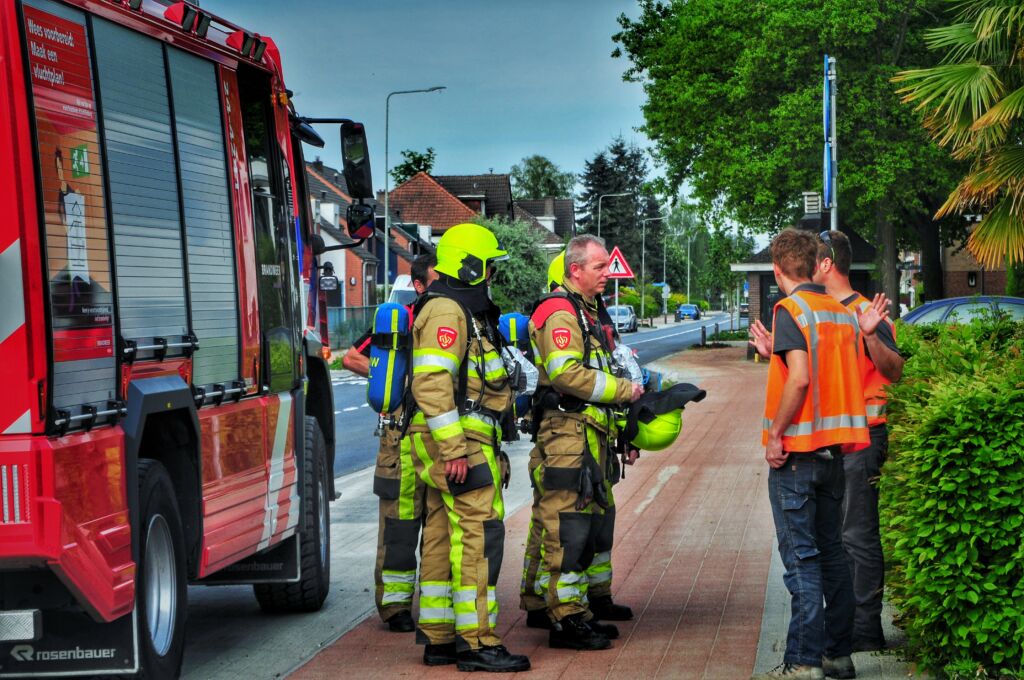
Helping the Helpers Through Mindful Self-Care
Mindfulness as a humanizing process in self-care for helping professionals.
The COVID-19 pandemic brought about significant changes in our daily lives, impacting how we work, learn, and engage with others. As a result, self-care has become a vital subject of conversation among professionals, particularly those who are grappling with challenges such as exhaustion, burnout, and even indirect trauma. Read More

How to Be More Thankful
Thankfulness—which might also be referred to as gratitude or appreciation—is a positive, other-focused emotion (Emmons & McCullough, 2004). It generally involves positive feelings about another person’s actions, but it might just be for the other person’s existence—e.g., I’m just thankful to have you! Read More
Why Not Give Up? The Correlation Between Despair and Hope
When we are in the mire, when we are in the pit of doom and despair and self-loathing, it is difficult to look up and see the light. Find trusted friends, colleagues, and professionals who can help be your guide and lead you to the light. Together, with the right guide, you can find reasons to keep winning and never give up hope. Read More


Duty, Honor, Hope – Strategies for Understanding & Unpacking First Responder Grief By: Beth L. Hewett, PhD, CT, CCISM, CEOLS
Emergency Planning for First Responders & Their Families
Traumatic Critical Incident Stress Info. Sheet for Spouses, Families, & Significant Others
Returning Veterans: No One Way to Help – In this 15th World Congress Breakout Session, Jon Kayne, Professor of Clinical Counseling and Psychology, Bellevue University, Bellevue, NE discusses: Returning veterans, whether recently returned or returned 70 years ago, often have difficulty readjusting to civilian life, and some never do readjust. The issues range from simply feeling that they do not fit in with their families and communities to others who suffer from severe traumatic stress symptoms. Watch Now
Hope (ICISF Quick Tips Podcast Episode)
Giving Thanks & Gratitude – Join us as we speak with guest speaker Rev. Rob Dewey, where we will discuss Giving Thanks & Gratitude.
Choosing Hope and Gratitude
By: Pete Volkmann, MSW
As the year 2023 (can you believe…2023!!!) ends, I have found the end of every year and beginning of the new year creates a time of reflection. Maybe that is why there are so many different holidays for many different cultures around the world. This is a major upcoming holiday season for so many of us worldwide. Holidays are designed as celebrations with time for reflection and connection. Many of us have taken time off from responsibilities, which is a choice in the way we celebrate our holidays. We have a choice on how we share that day. We have a choice of who we share our celebration with and where we celebrate this time of the year. We have a choice to limit our distractions and reflect upon ourselves and our circumstances from the previous year. We have a choice in how we process our thoughts and feelings for the new year. No wonder the end of the year holidays seems, at times, to be too stressful. It is a time of choices of how we filter our memories and interpret the meaning of those memories. This holiday season of reflection may be wonderful for some and yet this time of reflection may be painful for others. And others may experience a little of both. I must confess certain years in my life. I remember I just wanted the holiday season to end because of all the “distractions” and “responsibilities” the holiday season created. It was a time I chose not to reflect and think and feel about my life. I also chose not to be thankful in any way at all. I wanted nothing from the holiday season. I am sure I am not the only person that has had such holiday experiences.
Through all the years in CISM, I have learned through so many people the importance of the end of the year and the beginning of the year. The new year offers a chance for reset or a course correction in life. This is the time to think about who you are and examine your purpose. My own critical incidents have changed my life, sometimes for the better and sometimes for the worse. I do attest my life has changed. The choices I have made in dealing with the good in life and the bad in life have made all the difference in my personal identity and my life destiny. It was my ICISF experiences that taught me two important back pocket skills in life. Gratitude and hope. You cannot have one without the other. Gratitude is a recovery strength that sparks hope to provide us with direction when we struggle in life. You cannot have hope without having some form of gratitude in your life. You cannot have gratitude without acknowledging some form of hope.
Gratitude encompasses your mind-body-spirit (MBS) in wellness. Gratitude is the quality of being thankful; readiness to show appreciation for and to return kindness. Gratitude is both giving and taking of appreciation and kindness. Gratitude is utilized in the present moment in our lives yet acknowledges our past and our future in our lives. Gratitude is reality based and places our self-identity and our life purpose in perspective. Gratitude can be the result of experiences with others (man-made), or it can be spiritual in nature. Man-made gratitude is a result of our human experiences and/or our human relationships with each other. This man-made gratitude can also come from self-appreciation of who we are. The other type of gratitude to recognize may be “spiritual.” This spiritual sense of gratitude is something our human experiences cannot prove through just our senses. Spirituality is a sense of something cosmic or divine in nature in which we have a relationship. Let us not forget the “body” aspect of wellness that we sometimes do not recognize. “Body” wellness is the gratitude and self-kindness of what our bodies offer to us in our lives. Our bodies provide us with information through our senses that gives us proper interpretations of who we are and the world around us.
Gratitude is being thankful for what we have in our lives and what we do not have in our lives. Past struggles that have been overcome is a powerful appreciation anchor that promotes strength and hope for our present moment and future. Sometimes others’ hardship experiences provide personal gratitude for not being in such a personal life situation.
Gratitude always expands into some kind of “thankful kindness” experience that can be spiritual and/or man-made. It encompasses and results in kindness, compassion, understanding, and even forgiveness. Gratitude is a simple yet powerful conscious action that activates recovery in anything in life. No matter how bad your life is and how hard the struggle is, thankful appreciation sets a focus of kindness that can jump start your recovery. The present moment of gratitude may not change the circumstance in your life at that moment, but it can change what you focus on within your life and change your self-identity of who you are. Gratitude is a simple action that is a precursor to creating hope. Gratitude is not hope but it is the spark that can create hope.
Hope is a concept that is so important in CISM. Whether it is with an individual or with a group, hope is a major component in beginning the process of healing after a critical incident. Hope can be created through others (man-made) or spiritually created. What we do in CISM generates man-made hope through our training and our individual character. We also have the skills to expand spiritual hope beyond what our senses can detect. Spiritual hope may come from connecting with other humans or from a divine influence.
What makes hope…hope? There are six dimensions of hope that align with the five areas of distress in CISM. Check out the ICISF Podcast “Quick Tip Series” on the dimensions of hope.
Let us start with a definition. Robert Mills in 1979 provided different perspectives of a definition of hope.
- Hope is an attitude or state of being. Hope is the intuitive read of our conscious being that connects our whole selves, both conscious and unconscious, with the fullness of transcendent relationship that unites past and future as well as oneself with another.
- Hope implies participation in that which is hoped for. It is neither expansion nor reduction of self. It is transcendence of self. It is the “state of being” in which one exists in a true relationship with others.
- Hope, like love, is giving of self beyond oneself. Hope is peace beyond magical thinking or stoic acceptance that provides a glimpse of light. Hope opens the possibility of achieving a sacred sense of comfort, whether confronted by joy or overwhelmed by sorrow.
These definitions can run deep which makes grasping the understanding of hope challenging.
A colleague of mine, Brian Flynn, from Binghamton, N.Y. described hope beautifully as,
“Hope is who we want to be and how we interact with the world in which we want to live.”
Defining hope with universal concepts and a universal definition is difficult because it is a personal experience.
Hope is a complex concept that has different dimensions that cannot be seen through one lens. I have experienced two types of hope…
- Man-made hope (focuses on a valued outcome, goodness, or state of being. It preserves and restores the meaning of life. It clarifies, prioritizes, and affirms what a hoped person perceives as most important in life).
- Spiritual hope (generalized hope like a protective umbrella that is a pinhole of a positive glow that extends beyond time and matter).
Spirituality is a belief of something greater than self, something more in being human than just sensory experience, something greater that we are part of that is cosmic or divine in nature. It shifts from finding a certain way to live towards accepting and living in the experience.
I have compared the six dimensions of hope from the work of Karen Dufault and Benita Martocchio with the comparison of the five areas of distress in CISM training.
The five areas of distress include: Cognitive, Affective, Behavioral, Physical, Spiritual. Compare that with the six dimensions of hope: Cognitive, Affective, Behavioral, Affiliative, Temporal, and Contextual.
Comparing the five areas of distress (CISM) with six dimensions of hope.
6 Dimensions of Hope 5 Areas of Distress (CISM)
- Cognitive Cognitive
- Affective Affective
- Behavioral Behavioral
- Affiliative Physical
- Temporal Spiritual
- Contextual
Cognitive dimensions: Hope is reality based and not a wish. The cognitive dimensions make it reality based through a rational examination of personal resources and limitations at that present moment. It is not magical thinking. This dimension is “cerebrally based” through some kind analytical thinking.
Affective dimensions: Hope creates sensations and emotions that result in a confident feeling of an outcome with feelings of uncertainty with the necessary waiting for the outcome. Hope brings confident feelings for the future yet needs to have that uncertainty in waiting to ascertain if it will work. Hope is full of different feelings at the same time as a human being that are necessary in all hope concepts.
Behavioral dimensions: There are four realms of behavioral actions to energize feelings and attitudes to directly affect hope that include:
- Psychologic realms are those mental activities like organizing ideas, planning strategies, making decisions, and thinking of resolutions to create hope.
- Physical realms are personal acts we take such as proper eating habits, exercise, or even resting.
- Social realms are actions involving reaching out to others creating caring attachments.
- Religious realms contribute to religious functions such as charities, reading sacred scriptures, praying, and meditation.
Affiliative dimensions: are all about a sense of belonging beyond self. It is how we identify relationships with other people, other living things, and a higher power. There is an expression of hope objects that include a relationship with or concern for others. It could be a reliance on others through their skill and/or influence to create your hope.
Temporal dimensions focus on experiencing time in the past, present, and future into generating the hoping process. Past experiences may have helped you previously but can now be utilized again for your need to create new hope presently. Creating hope in the “now moment” using the other dimensions creates your future hope.
Contextual dimensions are hope components brought to the forefront of conscious awareness and experience within the context of life (life situations that surround and influence hope). This usually comes with loss resulting in hopelessness through stress and crisis. Hopelessness is NOT the absence of hope. Hopelessness is not the opposite of hope. Each concept activates a need for an outcome.
As we provide hope for others in our CISM skills, we are really utilizing at least one of the dimensions of hope. Tapping into these dimensions is what creates hope. Over the decades of CISM experiences and being part of ICISF, I have gratitude I would like to share publicly.
I am personally grateful for:
Dr. Jeff Mitchell, who created the CISD model that has changed my life for the better. You gave me the skills I did not know I had to have influence on those in their worst moments.
Dr. George Everly, who co-founded ICISF with Dr. Mitchell and expanded ICISF to become the largest crisis intervention organization in the world. You gave me the confidence to challenge the old world first responder system and bring CISM into an accepted standard of care with your wisdom you provided.
The ICISF staff who have always placed the CISM mission before their needs. I have been and will be inspired by your faithfulness through the years in all you do every day for ICISF. I genuinely love each and every one of you.
The ICISF faculty, who have dedicated the passing of their knowledge and personal experiences through course creations and provided support to every CISM student. It was not just your efforts in front of the class, but the side conversations to students providing compassion and confidence one soul at a time.
To the approved instructors who understood the trust Jeff and George gave us to be able to teach their CISM content. You all understood the responsibility to train properly and be ICISF ambassadors throughout the years. Every instructor has made a difference in keeping to our mission.
To every person who I trained in CISM, I am honored to be part of your CISM development and thankful for your time and efforts in the trenches in dealing with critical incidents worldwide.
To every person and every group who allowed me to become part of their recovery story through CISM. You have given me more than I could ever give to you…the power of human spirit and strength of hope in recovery.
To those individuals who have been there for me to keep me sober and sane throughout my many critical experiences in my life. You have saved my life again and again with no expectation for me to return the favor. Your unconditional love for me and consistent life skills you provided to me have been passed to others by me. That is the least I can do in appreciation. You know who you are. Thank you.
Through the gratitude I always realize how blessed I am in my life with ICISF…through all the good and all the bad. May I learn your personal ICISF gratitude when I see you in the future. Until then, may your gratitude in 2024 be abundant and your hopes for the new year be attained.


